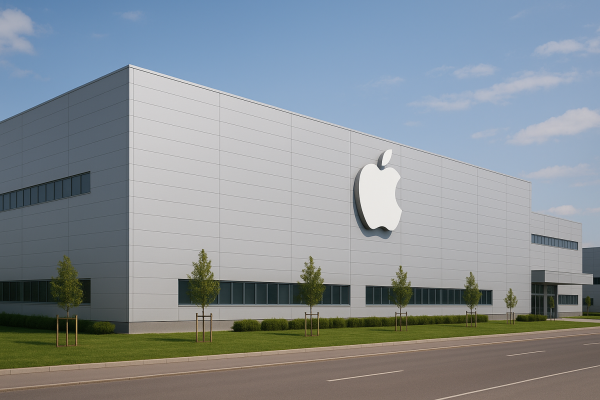Apple is working on a product that may not seem revolutionary at first glance, but could bring about a noticeable change in the company's strategy. They are planning to introduce a new, lower-priced MacBook that will not be based on the usual M-series processors, but on the A18 Pro chip used in iPhones. This small but significant technological decision is not only aimed at reducing manufacturing costs, but could also open up new customer segments for Apple, particularly in the education sector and among users with basic needs.
Based on current information, the device will have a 13-inch display and follow the MacBook Air line in terms of appearance, with a thin case and clean design. Mass production is expected to begin in the last quarter of 2025 or early 2026, with the launch likely to follow in the months thereafter. Based on leaked codes, the new model, identified as “Mac17,1,” has already appeared in Apple's back-end systems, suggesting that development is indeed at an advanced stage.
The chosen A18 Pro chip, currently found in iPhone 16 Pro models, is surprisingly close to the M4 processor in some performance tests, especially in single-core computing performance. Although it lags behind the newer M-series chips in terms of multi-core performance, it is clearly competitive with the previous generation, such as the M1, which still provides a sufficient foundation for everyday use. This means that the target audience for the new MacBook is not professional users, but students, home users, or office workers who mainly use the machine for browsing, word processing, and communication.
The device will be available in several colors: in addition to gray, blue, pink, and yellow colors are also expected. This move may be familiar from the iMac series, where the subtle yet distinctive colors brought visual freshness to Apple's desktop offerings. The Chinese manufacturer Everwin Precision is involved in the design, supplying the laptop casing and also participating in the manufacture of other Apple products, such as the smart glasses planned for 2027.
There is no official information on the price of the device yet, but based on analyses so far, Apple's goal is to make the new model cheaper than the current entry-level MacBooks. Currently, the MacBook Air M3 is available at a discounted price of $799, while the M1 version is listed at $649 at some retailers. For the new laptop to truly become a low-budget alternative, it may need to be priced even lower, at least in comparison to competitors such as Windows-based laptops and Chromebooks.
The decision to put an iPhone chip in a MacBook is unusual for Apple, as it has consistently built its computer offerings around M-series processors. However, the new model does not appear to be an experiment, but rather a targeted response to market demands. According to Apple's current plans, it aims to sell 5-7 million units of this model in 2026, which could account for 20-28 percent of total MacBook sales. This could make the new model one of Apple's most important products for the coming year.
Although the limitations of the A18 Pro are clear, especially in terms of memory and external display support, Apple clearly believes that these do not represent a significant compromise for the target audience. If the price of the product is indeed favorable, the new MacBook could provide an opportunity for many to enter the Apple ecosystem—even those who have previously found this door closed for financial reasons.
Only time will tell what compromises and advantages iPhone technology will bring to a laptop. But one thing is certain: this move could open a new chapter in the history of MacBooks – a quiet but significant change of direction.










































